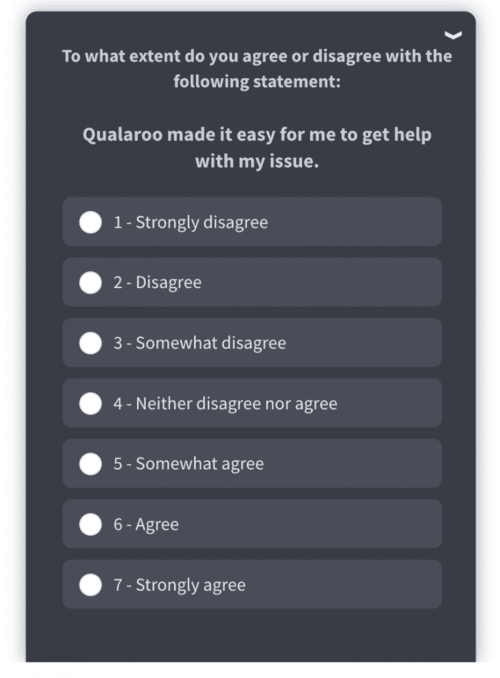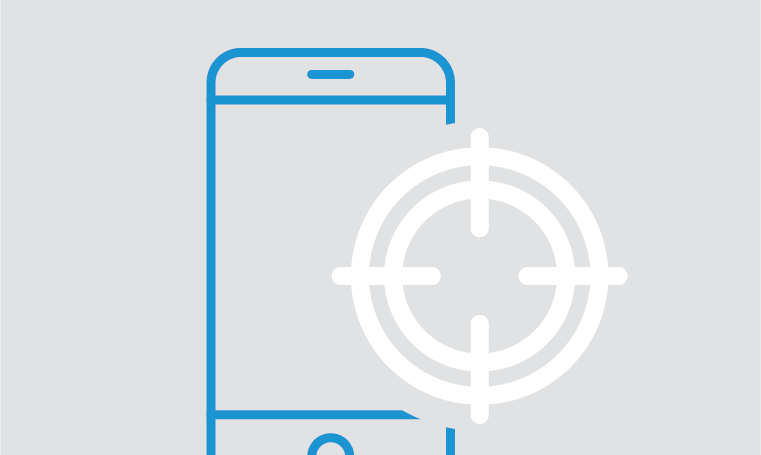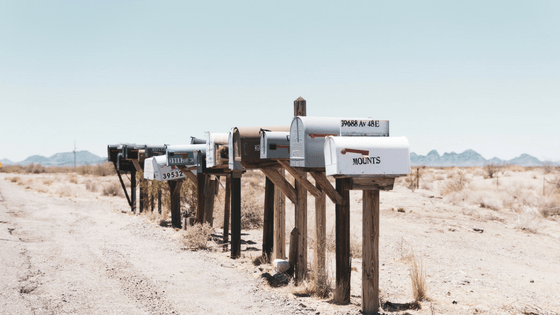
How do you find out whether your product or services are meeting the needs and expectations of your customers?
Of course, by asking them and most preferably with surveys.
But, what if customers don’t answer?
An average response rate for surveys is between 3% to 30%. More often than not, companies end on the wrong end of this statistic.
And if you are one of them, you don’t have to look further. In this article, we will share some excellent tips on how you can boost survey responses and enjoy an above-average response rate.
Why Does Survey Response Rate Matter?
When you conduct a quick or questionnaire survey, the aim is to get feedback and understand customers’ points of view on services, products, as well as experiences they have with the company.
A low survey response rate poses many complications for a business, apart from making it difficult for teams to know customers’ issues and what they need to do to ensure a seamless customer experience.
Here are a few problems low response rate creates for companies:
- A low response rate creates bias, popularly known as non-response or sample bias. It occurs when non-response is not equal between the respondents’ categories.
For example, if you send a survey via email, it might get lost in spam so customers won’t reply; if you ask personal questions, respondents might not be comfortable in replying as they might be worried about being judged, and so on.
- The response rate of surveys is directly perceived to reflect their effectiveness and quality. If a survey is incomprehensive, lacks simplicity in terms of language, and has no definite purpose, it is bound to get low survey answers.
- If the customers do not fill out surveys, it becomes challenging for product teams and the company to confirm whether they are on the right track since they don’t know how customers perceive their products/services. If a company is merely relying on the experts’ opinions, things are bound to go downhill.
Now, if a low response rate can mean so many things, what does an increased response rate signify?
- Defines a clear purpose of survey questions.
- Shows it was worth it for customers to take it.
- A successful instant reward program for completing surveys and much more.
Now, before moving on to how to get people to take a survey, there are two questions we need to look at:
A. What is a good survey response rate?
It is above the average, depending on the concerned industry, which can be anything from 20-25% and should have an abundant total response, i.e., sample size, to conclude the data. You can refer to this sample size calculator to find out your abundant total responses.
B. And, what is the minimum acceptable survey response rate?
As mentioned above, the average survey response rate is 5 to 30%, so anything above 5 is the minimum requirement.
How to Get People to Take a Survey: Tips to Boost the Survey Response Rate
Making customers happy and engaging with a company is not a Sisyphean task as it is made out to be. If you analyze closely, everything you do in your quest to boost customer interaction, sales, and even collecting feedback leads to a few things:
Making customers feel valued, heard, and entertained.
So, it is apparent that to encourage people to take your surveys and boost response rates, you need to incorporate these factors in your strategies. That’s what our tips on how to get people to take a survey will help you achieve.
Related Read: Top 45 Lead Generation Tools
1. Norm of Reciprocity: Create an Exchange
The best way to spark enthusiasm in customers to take your surveys is to use psychology to subtly push them towards action.
Why this works: If you understand what motivates potential respondents, you’ll be more than equipped to get the survey results you need.
In 1974, sociologist Phillip Kunz at Brigham Young University sent out handwritten Christmas cards to 600 strangers. His theory: if someone does something for you, you’ll return the favor. It is psychologically rooted in empathy, which comes from the supramarginal gyrus in our cerebral cortexes.

Kunz’s study worked. He received more than 200 replies from people, many of whom also sent their Christmas cards with handwritten notes. Some were even letters—a few were three or four pages long.
That’s why it didn’t matter that Kunz’s subjects didn’t know him: their empathy kicked in once they received something, and they felt compelled to give something back.
The same logic—of reciprocating when you’re given something—can be applied to timing your surveys.
As soon as you’ve helped your customers do something, trigger a survey to go out. Via the norm of reciprocity, your customers will feel compelled to do something in return (like taking your survey).
Here are some examples of great times to survey your customers:
- After they’ve been onboarded – Once you’ve given them a tutorial on using a core part of your product, survey them on whether it was helpful.
- After they’ve just responded to a CTA – Companies like Uber and Seamless survey customers after they use the product’s core function.
- When they’ve just made a purchase – Your customer has just worked their way through your site to make a purchase, so ask them what they’d like to see while it’s fresh in their minds.
Thanks to good ol’ empathy, timing your surveys to go out after you’ve just helped your customer will encourage them to respond.
Related Read – Here’s our comprehensive list of the Best Customer feedback tools for.
2. Incentive Theory of Motivation: Entice Them with a Promise
Via the incentive theory of motivation, positive incentives like “money, rewards, or recognition” motivate people to take action.
But most people have a present bias. We tend to prefer small rewards sooner than large rewards later. Even if your customers understand that responding to a survey will help them down the line, they’d prefer to have a small reward for sacrificing their time here and now.
Given our present bias, your customers’ positive incentive needs to arrive ASAP—otherwise, they won’t get that “dopamine spike” that will get them to take your survey. That’s why you must promise rewards to customers who take your survey.
Say you’ve just programmed this survey to pop up (below). It proves to your customer that they’ll be rewarded right now for doing you the favor of completing a survey—playing into their present bias and motivation via positive incentives.

Those actual rewards can differ, depending on the information you’ve already collected and how you’ve segmented them—like whether they’re a first-time customer, their gender and age bracket, and so on.
You can then make pop-ups using tools like Picreel and add them after the survey is complete with gift vouchers, coupon codes, etc., as rewards.
Here are a few examples of different kinds of rewards:
- Discount their next purchase. If you have the financial resources, it can help grow your survey response rates.
- Offer a content upgrade. Provide bonus content for your survey participants that isn’t already available. Based on how each customer has been segmented in your system, you can determine what kind of additional content they would find most useful.
- Offer themed merchandise. Items with your company’s embroidery can be an appealing incentive that can also raise your brand recognition.
The sooner your customers are rewarded for their time right now, the more likely they’ll be to fill out your survey.
3. Leverage-Salience Theory: Pique Your Users’ Interest
A study published in Oxford’s Public Opinion Quarterly tested the Leverage-Salience Theory of Survey Participation. The theory measured what factors made people more likely to take a survey—whether they found the topic interesting, if they trusted the organization surveying them, or if they would gain specific positive outcomes.
Their findings revealed something intuitive: people are more likely to respond to surveys when they find the topics interesting.
Relevance theory shows that we become interested in things that we believe are directly related to us. So to get people interested in your survey, not only do you need to make its purpose abundantly clear—you need to make it specific to each customer’s experience.
4. Reframe Each Survey to Be Customer-Centric
To make your survey prompts and questions as specific and as immediately relevant as they can be, you can use segmentation to analyze each customer’s experience in real-time.
For this, something like feedback software like Qualaroo can come in handy. It allows you to create surveys from scratch or via templates and offers advanced targeting options including segmentation.
Here’s how to personalize each customer’s experience:
- Phrase your survey prompts around each customer’s experience. In an analysis of one million surveys, Price Intelligently found that using customer-centric language spiked their response rates. So instead of saying “help us make our product better,” make subtle changes to prompt your users by saying “improve your product experience.”
- Personalize each customer’s survey. You can keep each customer interested in your survey by asking questions via branching logic, which can help you automate the personalization process.
The more specific you can make each customer’s survey experience, the more attractive they’ll find it—and the more likely they’ll be to respond.
5. Choose the Right Survey Type
One of the survey techniques to boost responses is to select the ideal survey type. Each type has a specific purpose. For example, if you want to know how difficult or easy a task is for customers, you can conduct a Customer Effort Score (CES) survey.

If you want to gauge the level of loyalty your customers have for your company, then you can design a Net Promoter Score (NPS) survey.
If you want to see how satisfied your customers are with your products/services and general interaction with your brand, you can conduct a Customer Satisfaction Score (CSAT) survey.

[Bonus read: Customer Satisfaction Metrics To Monitor]
If you operate on a Software-as-a-Service model and want to see how your product performs, the System Usability Score (SUS) survey is the best.
There are many more types of surveys such as five-second tests, exit-intent, quick surveys for feedback on content pieces, and more that you can conduct to get all-around feedback.
6. Make Relevancy a Priority
Have you ever started to take a survey and realized it’s not relevant to you halfway through? Welcome to the club!
It’s highly frustrating for customers to end up with a survey that does not apply to them and doesn’t even offer an opt-out option.
For example, if you don’t have any pets, answering a bunch of questions based on purchasing supplies will be an utter waste of effort and time.
Customers get the best customer experience when companies value their time. Creating surveys with skip logic or adding a screener before the survey will allow them to exit and save customers’ time, and that’s how you get people to take a survey.
So, instead of asking the above question, you should first ask –
7. Hail the Multi-Channel Approach
On-site and in-app surveys enjoy a very high response rate, but to ensure more customers take the survey, you need to remind them repeatedly via multiple channels. But not in an incessant way, of course.
The more they see of your brand and the survey, the more intrigued they’d get.
So, how can you make your survey visible?
It’s simple, post it on social media and send surveys via email.
You can embed surveys into marketing pages so that customers will see them multiple times on different channels and become curious to fill them.
*Note: There is a fine line between approaching customers several times and spamming them; companies often lose this sight. So make sure to map your surveys to not target customers who have responded to the survey.
Each channel has different survey types that work great to get responses from the audience. Here are a few examples:
- Social Media
You can create and conduct different market research surveys on social media platforms. You can get the right feedback from the right audience by asking the right questions using tools like Qualaroo survey maker.
Customer Satisfaction Score (CSAT) survey on your brand page:
- Where could we improve?
- What do you like best about [product or service name]?
- How likely are you to recommend us to a friend?
Demographic survey to better understand the market through a diverse pool of audience using social media:
- Which of the following options describes your ethnicity or race appropriately:
- What is your employment status as of now?
*Note: Don’t forget to add “Prefer not to say” or “Other” in options when asking personal and sensitive questions.
Behavioral survey to understand audiences’ preferences, shopping, and online behavior.
- How often do you shop for clothes?
- How much time do you spend listening to music on apps?
- Do social conversations influence your product choices in any way?
On-site and In-App
Any kind of survey is perfect for conducting on your website or mobile app. Surveys like NPS, CES, SUS, and many more allow you to collect contextual feedback to improve the processes and resolve customer pain points. Here are a few more surveys you should conduct on-site and in-app.
Exit-intent surveys pop up when a visitor is leaving the website to increase the customer retention rate.
- Was there anything you were looking for today that you could not find?
Product opportunities survey gauges the need and demand for different features in a product.
- Is there anything that is missing in our [tool/product]?
*Note: Check out our extensive question guide for product owners to leverage product opportunity surveys.
Content feedback surveys can be easily placed below a whole content piece or at specific website sections.
- Please tell us what you think of our content.
- Please tell us what you think of this [article/ blog post]:
Usability metrics of user experience (UMUX) surveys help to understand the usability of a product.
- This [website’s/ product’s/ tool’s/ software’s] capabilities meet my requirements.
- Emails and SMS
You can easily send surveys such as NPS, CES, SUS, and UMUX via emails through link sharing.
Utilizing text abbreviations in your email and SMS surveys can make them more concise and easier for customers to understand. SMS is the best option if you want to collect feedback post-service or post-interaction as they are the most effective to get quick responses from customers.
SMS open rate is at a staggering 98% compared to less than 25% for emails, which automatically makes it a preferred option.
Read Also: 12 Best Market Research Tool
8. Simplicity Goes a Long Way
Another tip on how to get people to take a survey is to keep it simple. As sophisticated as it may look to you, creating surveys with complex language or framing biased and ambiguous questions doesn’t seem appealing to the audience.
If customers fail to understand the meaning of the questions, their answers will be vague and less genuine. Many customers would even opt out of the survey as they can’t spend extra minutes just understanding what you’re asking.
It’s always a good idea to keep the questions simple and clear so that respondents can answer honestly.
Let’s look at two examples: the ideal question and the other, not so much.
The wrong way:
The right way:
Some audiences may not know the meaning of Rapid app development, so asking them this way will get the responses flowing.
3. Prioritize Privacy
Privacy is a big concern for customers, and many do not want to fill out surveys asking for personal information. As a responsible company, you want to prioritize customers’ privacy while encouraging the audience to take the survey.
You can add a privacy disclaimer at the bottom of your survey, entailing all there is to know about your data collection.
For example:
- How you’ll use the data
- Whether you’ll disclose the data to third-party
- Type of personal data you require and why
- How respondents can contact you
10. Design Customer-Centric and Branded Surveys
The design of a survey is as crucial as its language. It’s the first thing respondents see, so it plays a pivotal role in deciding if they will take the survey.
The design of a survey should be attractive to grab the attention of the customers. When designing a survey, choose tools that allow you to customize and even add personal branding. Surveys should be respondent-friendly, and each element should be clear and serve a purpose.
Branding increases the credibility of the surveys and the company, as customers can better associate the surveys with your overall brand image.
11. Add a Progress Bar
Ask yourself – Do you find it frustrating when you don’t know how much progress you made while doing something?
It’s the same for surveys.
It can quickly become frustrating for customers when they don’t know how many questions they need to answer. The suspense of each question can agitate the respondents and ruin the customer experience, leading them to leave the survey mid-way.
A simple progress bar at the top or bottom of the survey will take care of this issue. You can show how much progress respondents make as they answer the survey questions.
12. Create Mobile-Responsive Surveys
People generally use mobile devices more than they use laptops or desktops. It makes sense to create surveys that are equally appealing and effective on any device as they are on a website.
So, designing mobile-responsive surveys is not a choice, really. It is what you have to do to ensure you don’t lose the respondents by taking your inadequate and non-responsive survey via a smartphone.
It means you will have to ensure your surveys work wonderfully on almost any device from iPad, iPhone to multiple Android devices.
The difference between a mobile-responsive and web survey looks something like this:
Mobile-responsive survey –
Website survey –
You can use Google Mobile-Friendly Test to ensure your surveys perform phenomenally on all types of screen resolutions and devices.
Related Read : How to Increase Mobile App Conversion Rate
13. Implement Piping and Routing in Your Surveys
Piping refers to creating a flow in your survey, also known as branching logic. Here the survey questions that a customer will see will depend on their previous answers. With piping, you can give respondents a tailored experience, making the survey more relevant for them.
Routing allows respondents to skip the questions not applicable to them or the ones they don’t want to answer. It is also known as skip logic.
It gives respondents a choice in the survey, enhancing their customer experience and not just dictating them to answer each question.
Read Also: 7 Reasons Why Surveying Users is Important
14. Avoid the Spam Filter When Sending Surveys via Email
Using a worn-out impersonal and automated email template will not get you more responses. If anything, customers will think of it as spam, and your survey will sit in the pile of unopened emails forever.
Besides a catchy subject line, you need to give your email some personal touch and authority. For a personal touch, you can mention subscribers’ names and, for authority, use the name of the company’s CEO.
Bonus Read: How to Quickly Grow Your Email List: 42 Proven Ways
15. Follow up on Your Survey
The job doesn’t end with you sending out the survey email. If customers don’t respond to the survey, you need to nudge them again and remind them to take it.
While following up on your survey, you can explain why that survey is essential and how much their feedback would mean to your company.
You can also offer rewards and discounts as a part of your loyalty program to increase customers’ interest. You can read about other ways to follow up with respondents here.
Giving out incentives boosts customer motivation and loyalty to your company, and they are more likely to take the survey.
Bonus read: How to Follow Up With an NPS Survey
16. Gamify Surveys
For example,
- You can make the surveys competitive and create questions like “In 20 seconds, choose all your favorite dishes from below?”
- You can also offer rewards when they complete a task in the survey on time. It makes the surveys game-like, which is undoubtedly fun and increases customer experience.
- Adding a progress bar is also a form of gamification of surveys.
- Create leaderboards and rate their responses based on the quality of the answers and the time it takes to complete them. You can then display the score on the leaderboard and allow them to share it on social media.
Bonus Read: Best Website Feedback Tools
17. Localize Your Surveys with Multi-Language Support
Localization of services and products is an established way to boost customer interest in the company. Take McDonald’s as an example; it creates special items in the menus available in specific countries.
Another example is Amazon, and how it sends emails in languages native to the countries and has designed its website in several languages.
Similarly, suppose you want to survey a broader pool of audience. In that case, you need to provide multi-language support for your surveys and localize them based on the region you are targeting.
It will allow customers to comfortably take the survey in their preferred language and offer authentic feedback. Large language model (LLMs), such as GPT-4, can enhance localization efforts by providing accurate translations and culturally relevant content. This ensures that customers can comfortably take surveys in their preferred language, leading to more authentic feedback.
Bonus Read: How to Write Good Customer Survey Questions
Watch: Steps to building effective surveys
Make the Survey Experience Amazing for Every Customer
From all that we have read so far, we know how to do a survey and how to make it attractive and interesting to elicit more responses from the customers.
Remember, you can adorn your survey all you want with gamification, branding, or smooth language; if it isn’t suitable or fails to ask the right questions, the feedback you’ll get won’t be legitimate.
First, ensure you ask the right questions to the right people and then use these tips to make customers participate in online surveys.
Frequently Asked Questions
Q. How do you encourage participants to take your survey?
There are many ways to boost the survey response rate, like gamifying your surveys, spreading surveys on multiple channels, offering rewards when they fill out the survey, and many more.
Q. What are the types of questions asked in a survey questionnaire?
The types of questions you ask in a survey depend on what type of survey you are conducting, i.e., customer satisfaction, net promoter score, exit-intent, market research, and so on. Refer to this question bank to know the right questions to ask.
FREE. All Features. FOREVER!
Try our Forever FREE account with all premium features!







